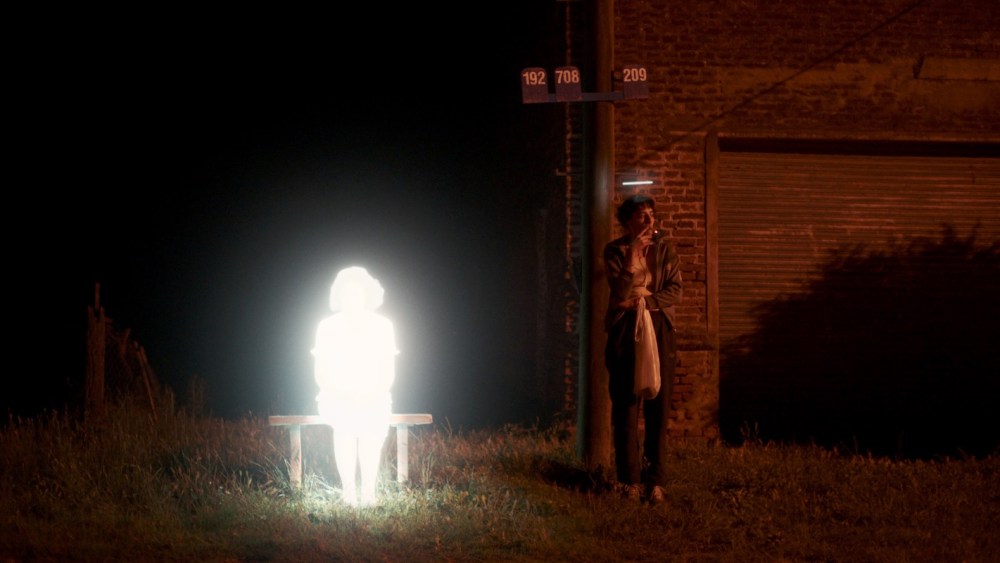Taking Leave of This World
In movies, small towns and big miracles go well together. Everybody knows each other there, news travels fast and city slickers — with their cynicism and logic and skepticism — rarely intrude. So it is with “Chronicles of a Wandering Saint,” a winsome comedy-drama about the residents of Santa Rita, a small coastal town in Argentina where a woman makes a startling discovery.
Rita (Monica Villa), a devout married woman who spends her days chatting and gossiping with her circle of churchgoing friends, believes she has found a religious statue that was presumed lost forever. The discovery gives Rita exactly what she’s yearning for: the opportunity to stand out and be celebrated and — at least within the town’s limits — famous and admired.
Rita craves attention, yet she’s blind to the efforts of her longtime husband Norberto (Horacio Anibal Marassi), who works nights at a neighborhood bar and is trying to resuscitate the candor of their marriage. Norberto re-creates the meal they had on their honeymoon 40 years ago, down to spraying mist from a water bottle to invoke the waterfalls they were visiting. But Rita isn’t feeling it. “The waterfalls are the same, but we’re not,” she tells him, indifferent to his overtures. Instead, she’s thinking about the best way to unveil her discovery — her long-lost holy artifact — for maximum effect.
First-time filmmaker Tomás Gómez Bustillo, who wrote and directed “Chronicles of a Wandering Saint,” cites the work of writers Gabriel García Márquez, Julio Cortázar and Jorge Luis Borges as major influences on what he describes as Latin American Magical Realism. That’s the genre the movie plunges into after something happens at the 35-minute mark which changes the story so radically, the entire end credits roll out over the screen before the film resumes.
That bit of trickery is proof Bustillo is winking at the audience, ensuring they don’t miss the forest for the trees and take “Chronicles” too literally. The rest of the movie, which plays at a different scale and key than the first third, is best left to be discovered by viewers, although it doesn’t spoil anything to say that Rita (wonderfully played by the veteran Villa as a likable, nervy neurotic) is radically changed and forced to consider the consequences of her desire to be loved.
The humor in “Chronicles of a Wandering Saint” becomes more pronounced and whimsical as the film goes along. Bustillo’s wit is minimalist without being precious, and although some scenes are not far removed from deadpan Jim Jarmusch absurdity, Rita’s plight — what price fame? — becomes more reflective and thoughtful than you initially expect.
That’s what Bustillo does throughout the film: He keeps surprising you by what he doesn’t do. From an ingenious needle drop of a Dutch cover of Bryan Adams’ “Heaven” to the surprising appearance of a literal devil with horns, “Chronicles of a Wandering Saint” refuses to be boxed in — much like the indefatigable Rita herself. If the movie is ultimately a statement on spiritual faith and the existence of an afterlife, then Bustillo leaves no doubt where his beliefs lie, although you don’t have to share them to savor the slightly off-kilter world he has created here.
“Is the wind really just the wind?” her husband asks her. “Or is there something else that we’re not seeing?” For that question, at least, the movie has a definitive answer.


